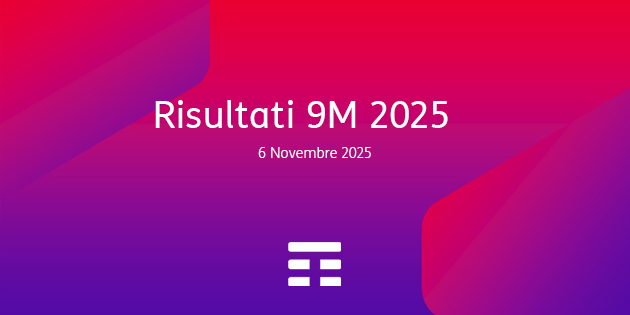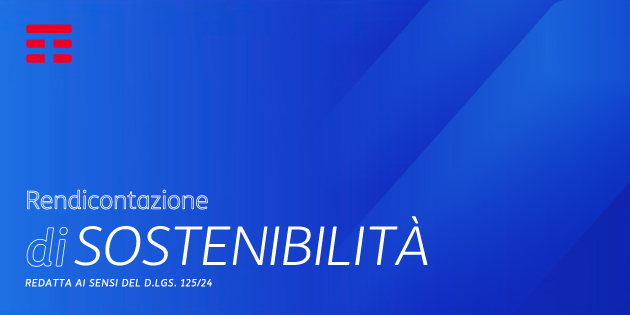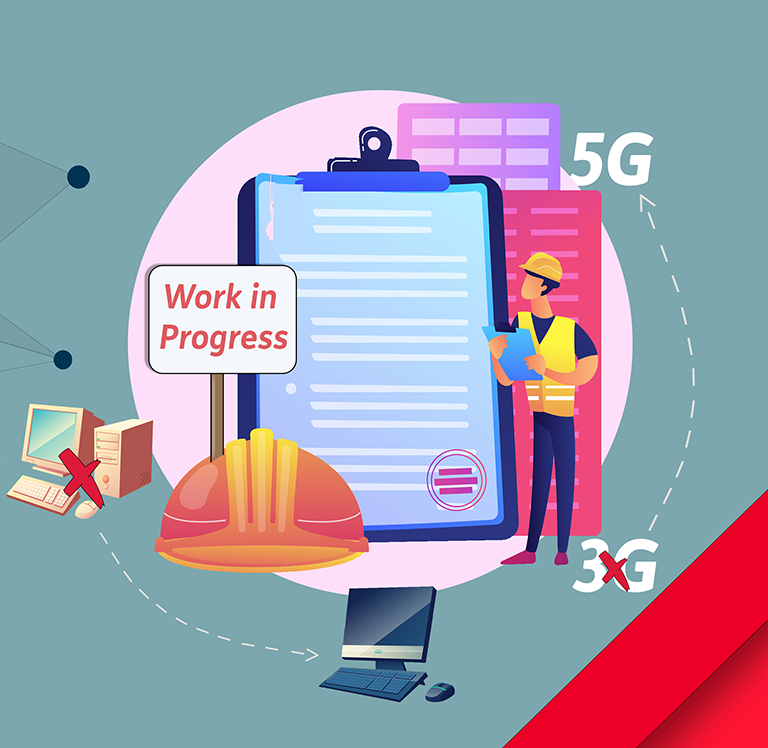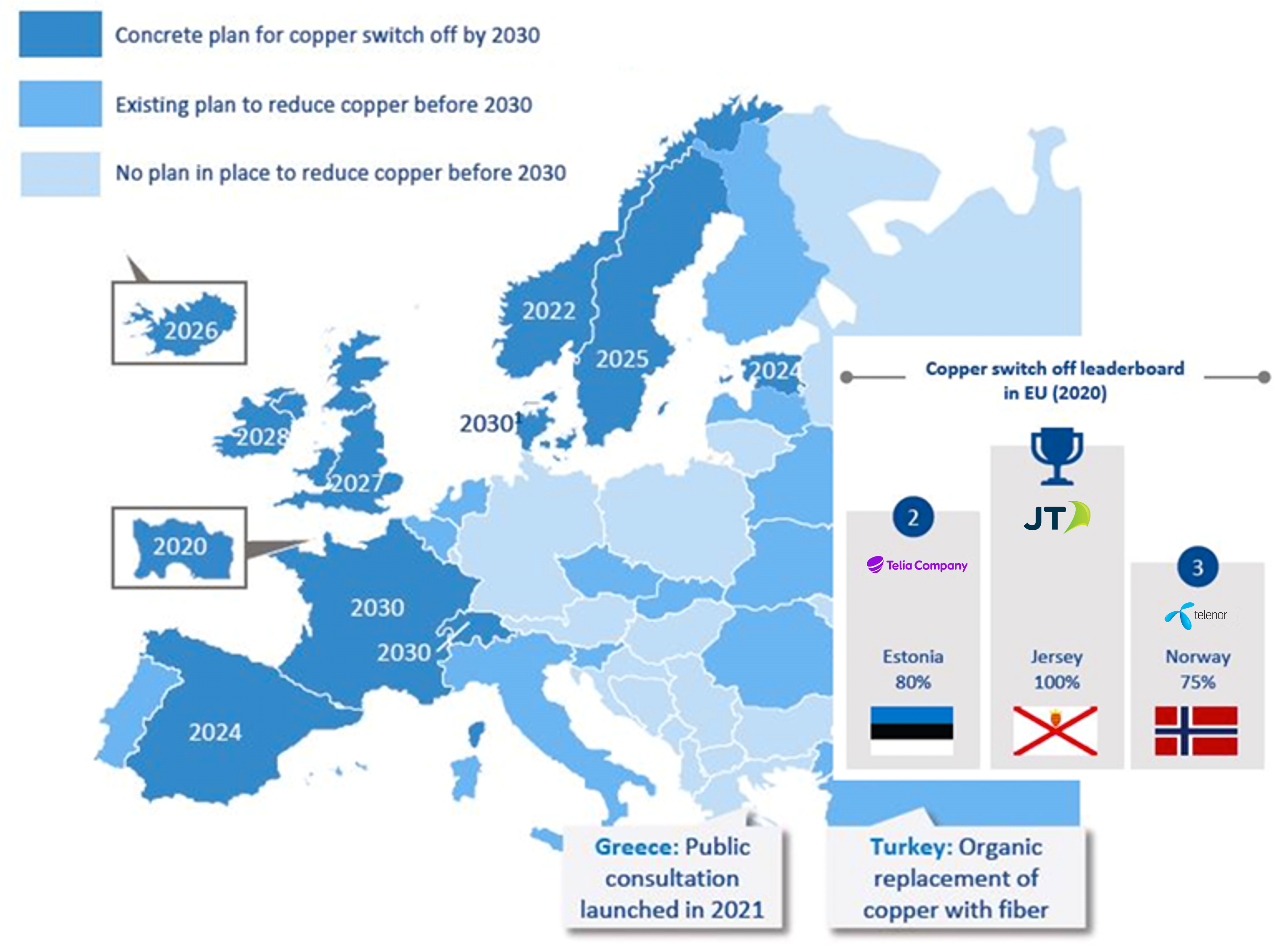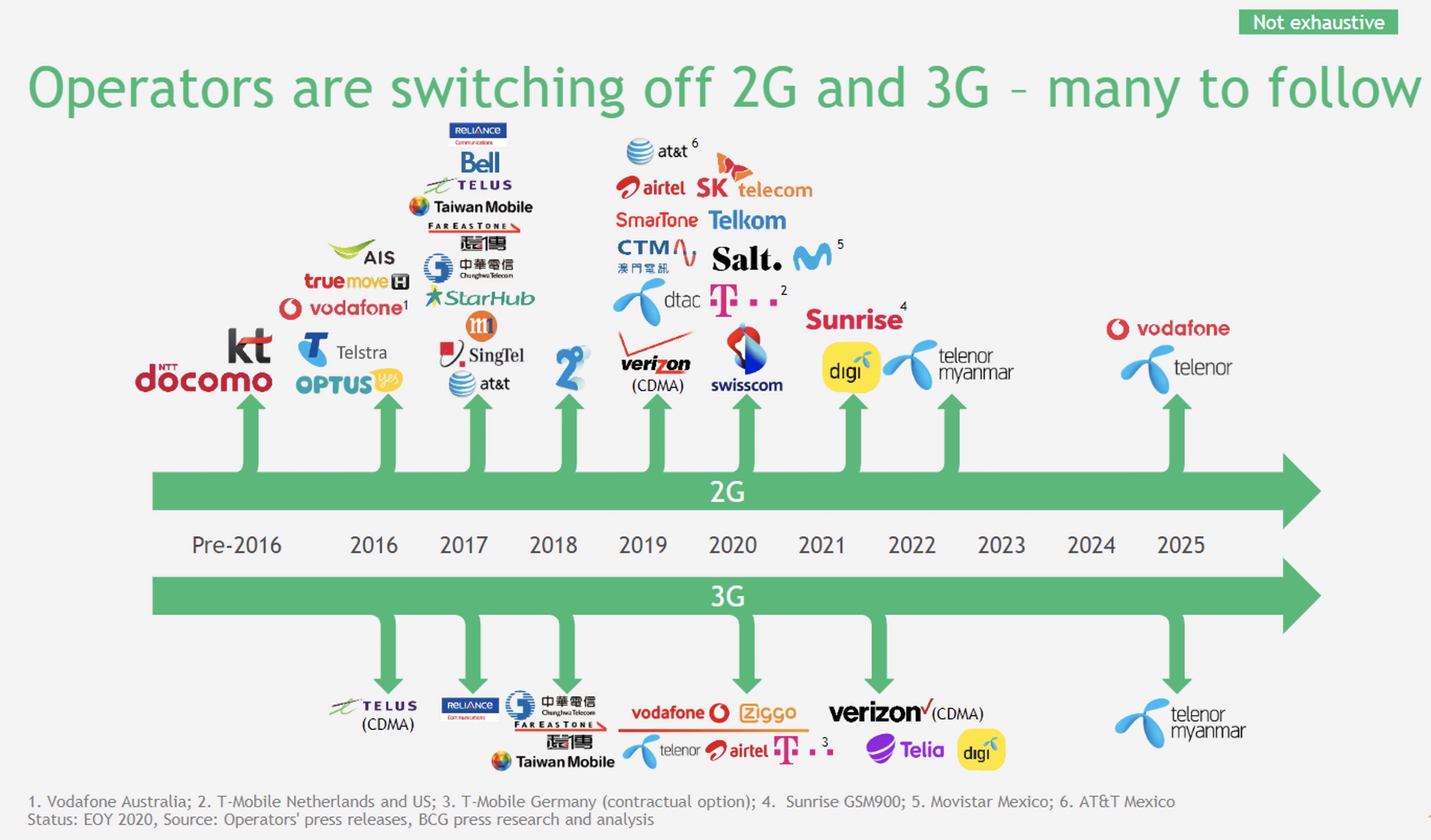In the next paragraphs a summary of obsolescent TIM (and subsidiaries, where specified) networks/platforms will be given, specifying decommissioning plans and strategies when available. As a general consideration, dismission or substitution of old equipment ensures savings on energy and operating costs and reduces the risks of faults, strengthens IT security and enables new services provisioning. These benefits won’t be repeated in the following, while other specific advantages or peculiar issues will be described in detail.
Central Offices
The decommissioning of Central Offices, besides great savings on energy and rental fees, brings revenues from building disposal: about 6.700 Central Offices out of a total of more than 10.500 could be released when copper-based services will be migrated to new fiberbased ones.
In relation to that, accelerating NGAN/FWA plans is critical in achieving the goal and is compliant with the constraints imposed by the already mentioned regulatory rules.
Fixed & Mobile Access
On fixed access, ATM DSLAMs need to be migrated to IP ones since they are obsolete and out of support (a swap plan started in 2015 and is still ongoing), and moreover migration from ADSL (based on copper) to FTTx services (based on fiber) should be boosted, as already said, also on the regulatory level. On mobile radio access, the 3G switchoff project aims at closing 3G service and reusing related frequencies for more advanced technologies: it will start in April 2022 with a closing target by June 2022.
In addition to the costs and benefits common to all decommissioning projects, 3G Switch Off requires marketing expenses, for dimensional extensions (e.g. VoLTE) and interconnection systems but enables the release of backhauling and core network resources.
About 2G, there’s no switch-off plan at the moment, rather its capacity will be pushed to support the voice traffic swap from 3G. In addition to what described above, around 60 Operational Support Systems of access domain competence are in an obsolescence state, but their replacement is not always feasible because of the obligation to keep running some outdated services (e.g., for regulatory and/or marketing constraints).
Transport
Transmission networks have been evolving since the ‘80-90s starting with PDH, SDH and then WDM: most of those pieces of equipment are still running, despite the End of Sale/Support of the technology or even supplier withdrawal from the market. Spare parts shortage, shorter life cycle after repair, skilled support hardly available are just examples of the issues to manage and about the same ones can be applied for their Element Managers (many different systems with multiple instances each). Although a decommissioning project of SDH/PDH and old DWDM networks has been analysed several times in the last two decades, two main reasons have prevented its realization: extremely high costs and regulatory constraints on commercial services.
Indeed, the only way to empty and switch-off PDH/SDH networks in a sustainable way would probably be to migrate the customers towards Ethernet based connection services. Even, if necessary, with regulatory imposition. With regard to obsolescent packet transport technologies, there are ATM nodes, ATM to IP gateways, Switches and old routers mostly in End of Support, without forgetting tens of thousands of old Ethernet CPEs. Switches will be removed as the R-Evolution project (Ref. 4) is implemented, while for the other equipment a plan must be still defined, considering that some business and wholesale services can’t be properly replaced.
Edge and Core Network
This network segment contains platforms enabling both fixed and mobile, voice and data services, characterized by different stages of technology (physical, virtualized, cloud native) and aging. For this reason, a general treatment is not suitable and some hints about the main legacy platforms are reported in the following.
Legacy Fixed Voice Transit Network (BBN)
BBN network was the first Telecom Italia technology for long distance fixed calls using IP and replaced the full TDM SGT network. Since 2011 a new full IP Class IV network (GTW/M) has been deployed but currently on BBN there are still fixed OAOs interconnected in TDM: the nodes can be turned-off only if all OAO traffic migrates on IP interconnection and actions must be taken at regulatory level to achieve this goal.
Legacy VoIP Platforms
The first Voip solution for consumer and small business customers in Telecom Italia network (Pk3) was implemented in the 2000s. Starting from 2014, the IMS technology was added to manage all types of customers and services and the migration towards it is about to be completed. For private telephone networks, a new cloud native and IMS solution was deployed in 2020 to replace the old one (Pk0), and since 2021 migration has started but a swap tool that applies to all on-premises PBXs must still be developed.
Interactive Platforms & “Voice” Services
An evolution path of the bare metal nodes of the legacy platforms towards a modern, agile, flexible, scalable, secure architecture is ongoing and enabling advanced interactive services through the use of innovative voice resources (e.g. IVR Services, Digital Contact Center, Vocal Portal, Voting, Fundraising, Utility, etc.).
Wireline Service Layer
Many transformation solutions have been (or are being) defined for legacy telephony services (e.g., Public Telephony Service, Carrier Selection, Number Portability and others) to migrate to a cloud environment and operative plans are still under e valuation.
Signaling Network Evolution
The current platform (Eagle5ISS) handles all wireline network signaling layers and a migration towards a new virtual/cloud application named vSTP has been defined. One couple of virtual nodes is already handling traffic but another one is needed to complete the migration.
NAM and FEV platforms
The FEV (Voice/Signaling Front-End) and NAM (Multifunction Access Nodes) platforms deliver mobile traffic and signaling to the transit devices towards the IP/MPLS BackBone (OPC). Both platforms are critical assets for the Italian Government Resilience Decree and their traffic will be migrated to the new NAM+ nodes by the end of 2025.
RA/PE Business connectivity platforms
At the end of 2021, there were hundreds of obsolete ATM and IP devices in these platforms and the migration for those devices is following different approaches. A decrease of customers is expec ted for ATM because of autonomous termination of contracts while on obsolete IP devices there may be a decrease in customers also due to swap towards a most recent technology. Anyway, customer migration is very complex as there are multiple services on each node and above all the deployment of new resources will be needed.
Service Platforms
At the Service Layer level, platforms decommissioning is considered as part of the Transformation path for systems and platforms evolution, where it is essential to identify and assess (measure, control and reduce) vulnerabilities and obsolescence. Transformation projects are complex with multifaced activities including optimization of systems/platforms processes with simplif ication (keeping platforms) and rationalization (some platforms are decommissioned). A target of such transformation is becoming “lean”, that is minimizing complexity, delayering, and pushing innovation. In the medium/long term, efficiency will become the main objective with growth achieved by means of flexible resources. Opportunities associated to obsolescence management and decommissioning are numerous, for example: facilitating the connection to the ecosystem, through the microservice/API approach; taking advantage of optimization for migration to the cloud; replacing equipment with more eco-responsible solutions; increasing the number of Service Platforms developed internally. Expanding internal development capabilities for new native cloud platforms and re-platforming of existing platforms is allowing TIM to pursue significant benefits such as renewing internal competencies reducing time and costs, governing strategic assets, eliminating vendors’ lock-in increasing flexibility for services go live. Through this Transformation projects path for Service Platforms, TIM will be able to play a key role in a wider ecosystem of application service offering, an opportunity to create and deliver (jointly with partners) new revenue-generating enterprise services.
IT
IT decommissioning plan is part of the ongoing transformation initiatives guided by the following rationalization and simplification principles:
- simplifying the company architectural landscape and overcoming technology obsolescence;
- enabling integration and synergies among Software Development factories;
- implementing future-proof technologies in all the application domains;
- rationalizing costs for Application Development and Application Maintenance. Consistently with these guidelines, in general the initiatives involve two different activities:
- implementing a new application or service to replace the functionality of an old one;
- removing the old application while ensuring effective access to data that must be kept for regulatory or legal purposes.
In the coming three year plan, the commitment to reduce applications will continue: while the main objective is always the implementation of new services/capabilities, the decommissioning stream is critical to achieve simplification and exploit the opportunities of new technologies.
Subsidiaries
Sparkle
The main decommissioning activities in 2021-22 include old DWDM and SDH, the older PEs and core routers, while on the IT side they concern the older ticket monitoring, inventory and management systems. Furthermore, on the basis of specific agreements made with the involved consortia, two submarine cables will be released within next year after the two already dismissed in 2020-21.
Noovle
Noovle strategy to become the only Public Cloud Provider authorized to deliver Google Cloud services in Italy is based on three main guidelines: building new DCs, rationalizing existing ones, increasing automation and efficiency. To achieve these objectives, it is mandatory to renew the connectivity among existing DCs: the target solution is to connect each DC to dedicated PEs into TIM national central offices with new high-capacity connections, thus replacing the old VDCN network.
TIM Brasil
On mobile network TIM Brasil and VIVO, another Brazilian mobile operator, decided to reduce 2G footprint through an agreement, in which one of the operators turns off its 2G network where both are present, inside a perimeter of about 1100 cities, enabling the possible frequencies refarming for 4G. In addition to this, TIM Brasil is planning to complete switch off legacy 3G Network within 2025. In this meanwhile, 3G coverage can be partially deactivated in cities and regions where 4G devices penetration is close to 100%, and both voice and data services can be held by LTE network, also allowing refarming to 4G. Other initiatives are ongoing to reduce the consistency of SDH, PTN, old DWDM and old IP routers.

